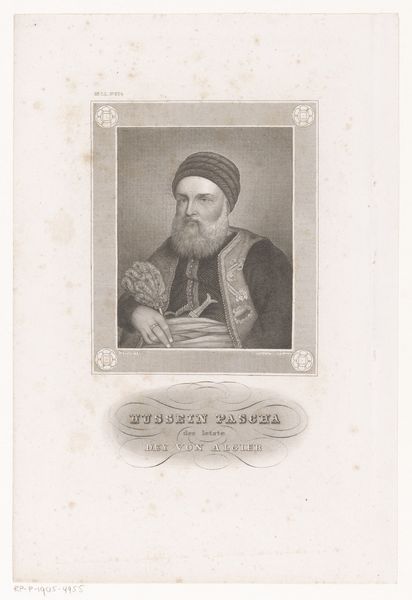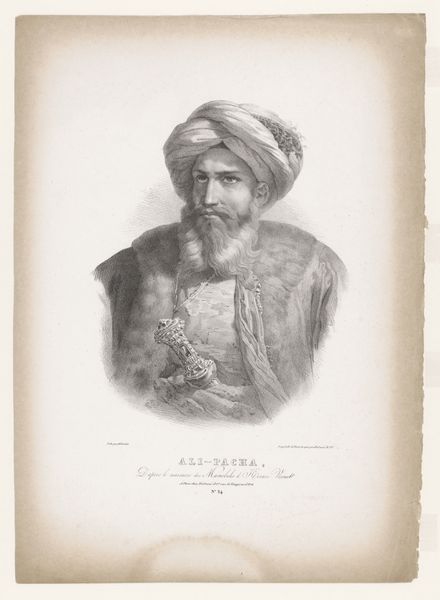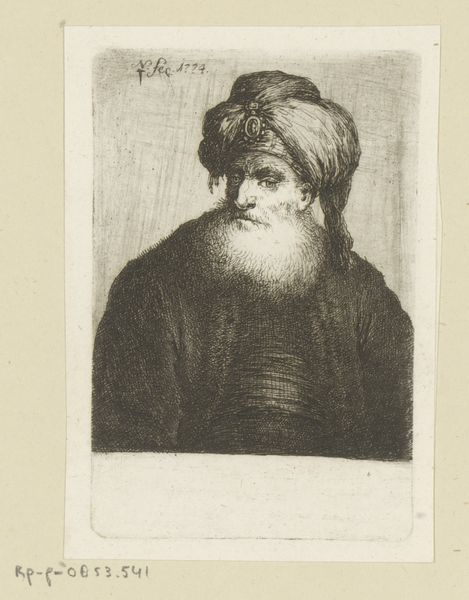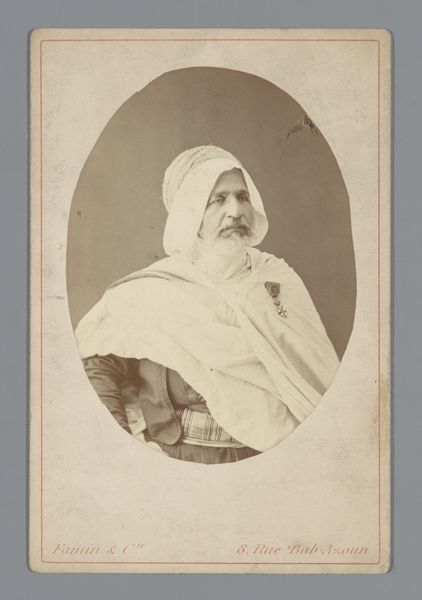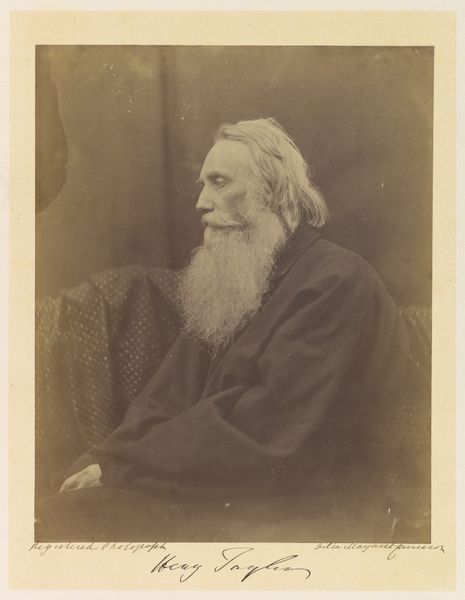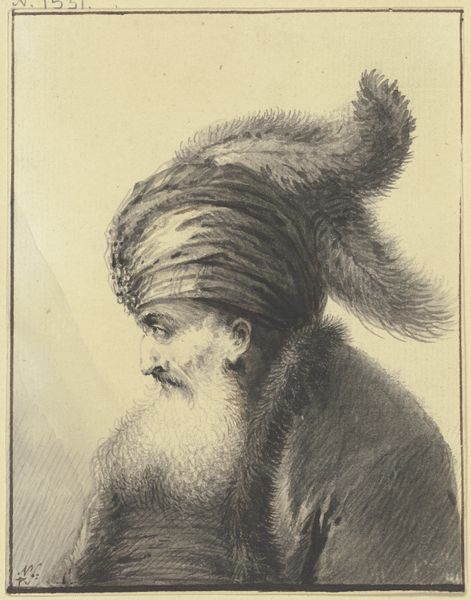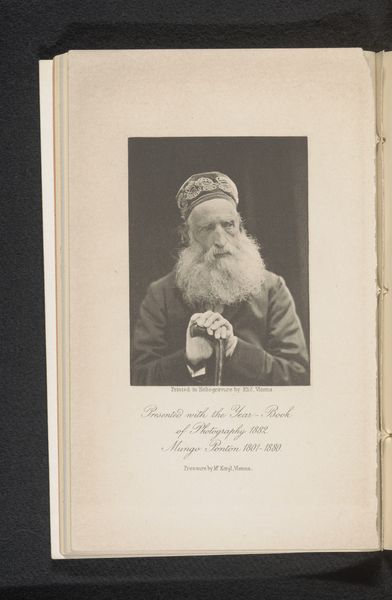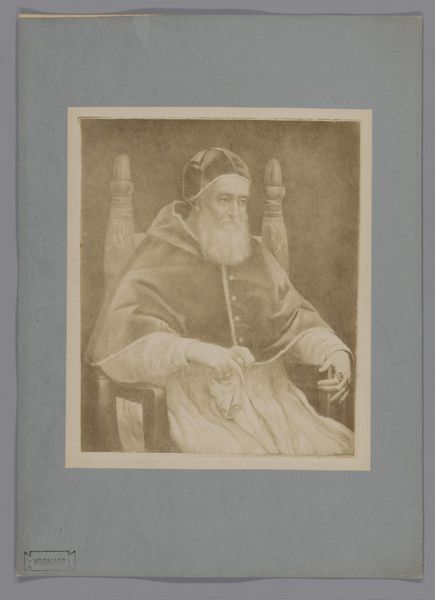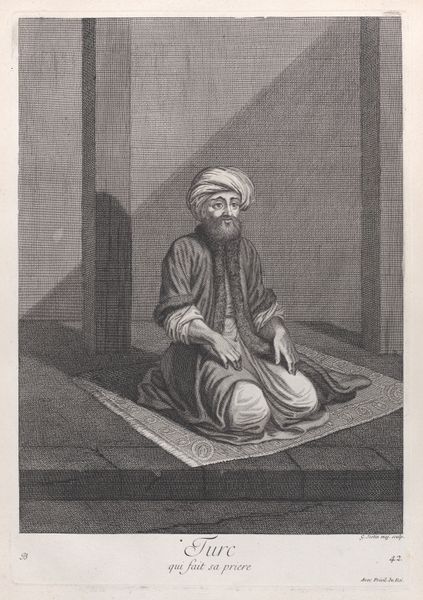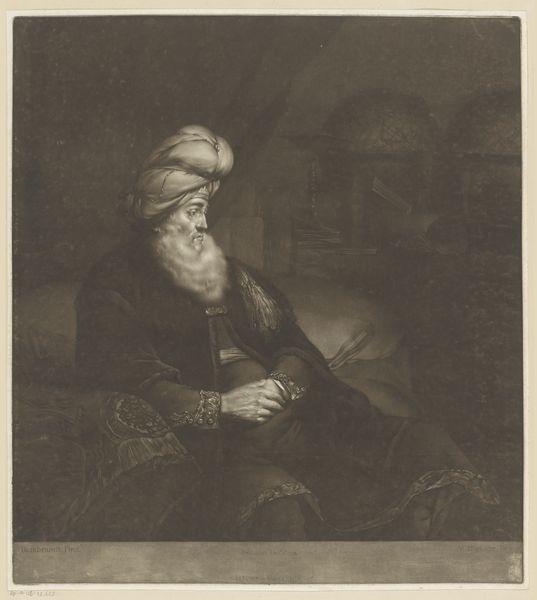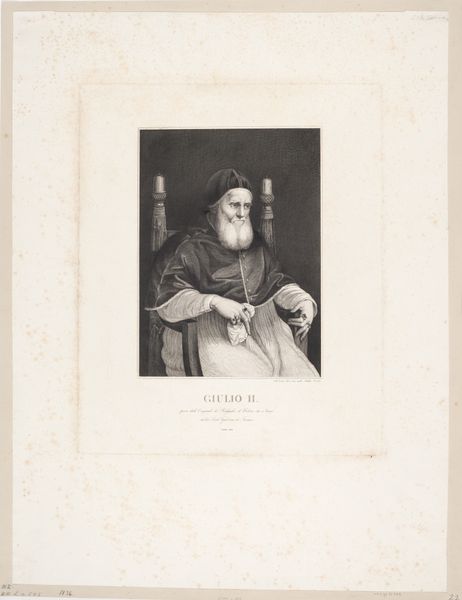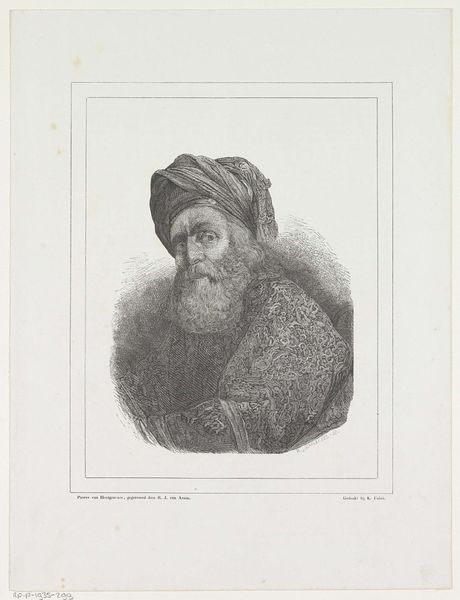
photography, albumen-print
#
portrait
#
photography
#
framed image
#
orientalism
#
19th century
#
albumen-print
Dimensions: height 164 mm, width 108 mm
Copyright: Rijks Museum: Open Domain
Famin et Cie. created this portrait of an unknown Jewish man, with photography. The proliferation of photography in the mid-19th century allowed for an increased interest in documenting different cultures. As photography became more accessible, studios like Famin et Cie., located at 8 Rue Bab-Azoun, began to cater to a diverse clientele, capturing images of people from various backgrounds and social strata. This portrait uses conventional visual codes such as formal pose and lighting to create meaning. The man’s traditional clothing may reflect the artist's interest in documenting cultural diversity, or it may have been an attempt to appeal to a growing market for ethnographic imagery. The institutional history of photography, as a medium that developed alongside colonialism, invites questions about the power dynamics involved in the representation of marginalized communities. The value of such images for historians lies in their ability to provide insights into the social and cultural landscape of the time, offering a glimpse into the lives and identities of individuals who might otherwise have been overlooked in the historical record. Understanding this requires researchers to explore various archives and consider the socio-political context in which these images were produced.
Comments
No comments
Be the first to comment and join the conversation on the ultimate creative platform.
